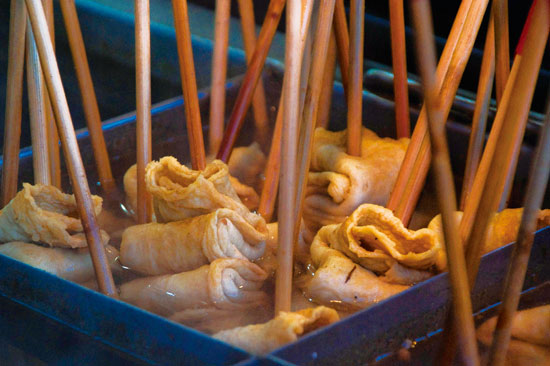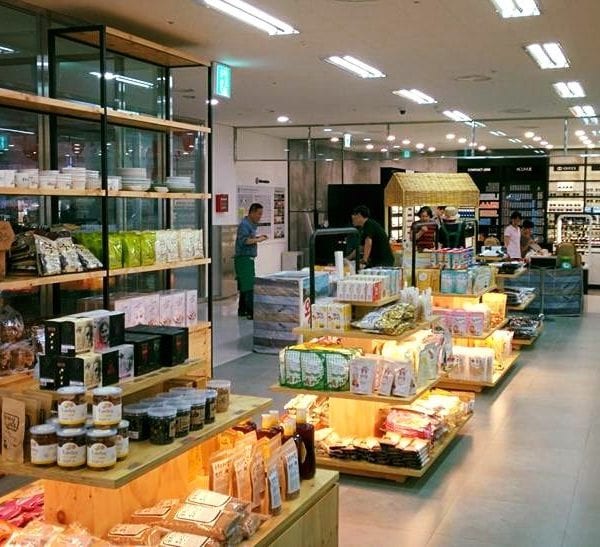Words by Ciaran Hickey
Odeng is one of the gems of Korean food for me. It scores top points in three important categories: it tastes great, it’s filling and it’s cheap. It’s also pretty much available everywhere you go, including malls, supermarkets, convenience stores and even 5-star hotels.
What Is Odeng
Basically, Odeng is seasoned fish paste that has been formed into cakes or strips and then cooked. These are then mostly threaded onto wooden skewers for serving.
Odeng is often served as a street food or in hot pots. The fish paste is made by grinding fish (such as white fish or pollock) into a smooth, dough-like texture and then mixing it with seasonings, starch, and sometimes vegetables. The resulting mixture is formed into cakes, strips, or sticks, which are then boiled or steamed.
Types Of Odeng
When you spend your time in Korea you will come across three different types of Odeng. The first and most basic is simply served on sticks sitting in a broth. The broth is usually based on turnip and leeks with either crab or dried seaweed adding a boost of flavor.
At the food stalls you see on the streets of Seoul (Pojangmacha) you just eat as many as you want and hope that the vendor is counting your sticks. The broth is always free and varies from place to place. If you see crab shells, pumpkins or leeks floating in the broth, chances are it’s going to be good. A soy sauce paste is usually served for you to dip the Odeng in if you think it needs a lift.
One interesting variation I have tried is red Odeng, in which the fish paste is served in a spicy red Gochujang-based sauce. Not for the faint of heart!
The paste is rolled on sticks, deep-fried, and served with mustard sauce and ketchup. The variety of these is wonderful with different stalls competing for business by inventing their own versions. I had one of those recently with processed cheese filling which I am a little ashamed to say that I loved.
Finally, we have the real cold buster, Odeng tang (also known as Eomuk Guk). This Odeng is served in a bowl of broth with a touch of chili, chopped green onions and soy. You really should be sitting down for this. It’s a hearty treat often served with Soju or Jeongjong (a Korean version of sake). The color, taste and shape of the Odeng vary a lot depending on where you order the soup, so you may have to root around to find your favorite.
The final selling point for me is that my kids will eat anything once it’s on a stick, so Odeng is perfect for us as a quick filler when we are out and about. Tasty, quick and cheap, this is one part of the local dining scene you simply cannot miss.

Where To Eat Odeng
The Best Odeng in Busan: Why Busan? Odeng first became popular during the Japanese occupation of Korea, and Busan was the center of this fad thanks to its proximity to the island nation.
Miso Odeng 미소 오뎅 (Busan)
Come here for exotic choices like mushroom Odeng and squid Odeng. Odeng is ₩500 each, and Bibim Guksu goes for ₩3,000.
Address: 1748-2 Daeyeon-dong, Nam-gu, Busan
Myeongdong Street Food Stalls (Seoul)
Myeongdong is one of Seoul’s busiest shopping districts, and it’s also a hotspot for street food. You can find numerous Pojangmacha (street food stalls) offering Odeng here.
Kyedong Since 1993 (Seoul)
With a history dating back to 1993, Kyedong has earned a reputation for offering high-quality, flavorful fish cakes served in a delicious broth. The warm, inviting atmosphere of the restaurant makes it a popular spot for locals and tourists alike who are looking to enjoy authentic Korean comfort food in a cozy, relaxed setting.
Address: 199-62 Euljiro 2(i)-ga, Jung District, Seoul
Want to try other street food while visting Korea? Check out our top 9 street food reccomendations.



